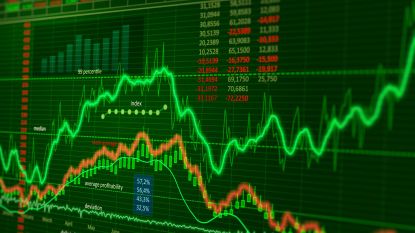Stocks managed to post gains on light volume ahead of the long holiday weekend.
Reassuring data on inflation (opens in new tab) soothed traders’ nerves, which have been rattled in December by the Federal Reserve’s policy of relentlessly hiking interest rates (opens in new tab). Be that as it may, not many market participants are around at this time of year, which makes it tough to develop takeaways from what the equity benchmarks are doing.
That’s especially true this year, given that the stock market will be closed (opens in new tab) Monday in observance of Christmas, which falls on a weekend in 2022.
Subscribe to Kiplinger’s Personal Finance Be a smarter, better informed investor.
Save up to 74%
Sign up for Kiplinger’s Free E-Newsletters Profit and prosper with the best of Kiplinger’s expert advice on investing, taxes, retirement, personal finance and more – straight to your e-mail.
Profit and prosper with the best of Kiplinger’s expert advice – straight to your e-mail.
For the most part, economic data on durable goods and inflation drove Friday’s session.
As for the former, the Commerce Department reported that durable goods (opens in new tab) orders plunged 2.1% in November, which was well short of economists’ forecast for a decline of 0.6%. We also saw the release of the Fed’s preferred measure of inflation known as the Personal Consumption Expenditures Price Index (opens in new tab) (PCE).
The latest report showed that inflation slowed in November (opens in new tab) to a 5.5% increase in prices vs. the prior month. That was in line with economists’ forecasts and represented a slowdown from October’s 6.1% monthly rise in prices. Any data that suggests the Fed is succeeding in taming the worst inflation in four decades is generally applauded by the market, which is desperate for the central bank to slow its policy of interest rate hikes (opens in new tab).
Sign up for Kiplinger’s FREE Investing Weekly e-letter for stock, ETF and mutual fund recommendations, and other investing advice.
In less bullish news, the PCE report also showed that consumer spending (opens in new tab) rose just 0.1% in November, which represented a deceleration from October’s increase of 0.9%. The figure troubled at least some market participants as it could signal a potential slowdown in consumer spending.
“November’s personal income and expenditure report was close to what markets were expecting, even though consumption was relatively weak in both nominal and real terms,” wrote Eugenio J. Alemán, chief economist at Raymond James (opens in new tab). “The report was consistent with the weak retail sales report earlier this month, where we saw a very weak print for the consumption of goods and a relatively strong print for the consumption of services.”
At the closing bell, the blue-chip Dow Jones Industrial Average added 0.5% to finish at 33,203, while the broader S&P 500 gained 0.6% to 3,844. The tech-heavy Nasdaq Composite rose 0.2% to close at 10,497.
The Best Bear Market ETFs to Buy NowWith just a handful of trading days left in 2022, the stock market is all but certain to log its worst annual performance since 2008. All three major market benchmarks entered bear market (opens in new tab) territory this year, and there’s no telling when they’ll pull out of it.
But as unpleasant as they may be, bear markets are natural and inevitable – and surviving a bear market (opens in new tab) needn’t be all that complicated. Whether we’re talking about the best stocks for a bear market (opens in new tab), the best defensive Dow dividend stocks (opens in new tab) or even stocks picked by artificial intelligence (opens in new tab), investors have no shortage of strategies to mitigate the damage.
Most importantly, investors should be diversified, and that’s where exchange-traded funds come in. Be sure to check out the best ETFs to battle a bear market (opens in new tab) as you set your allocations for 2023.
